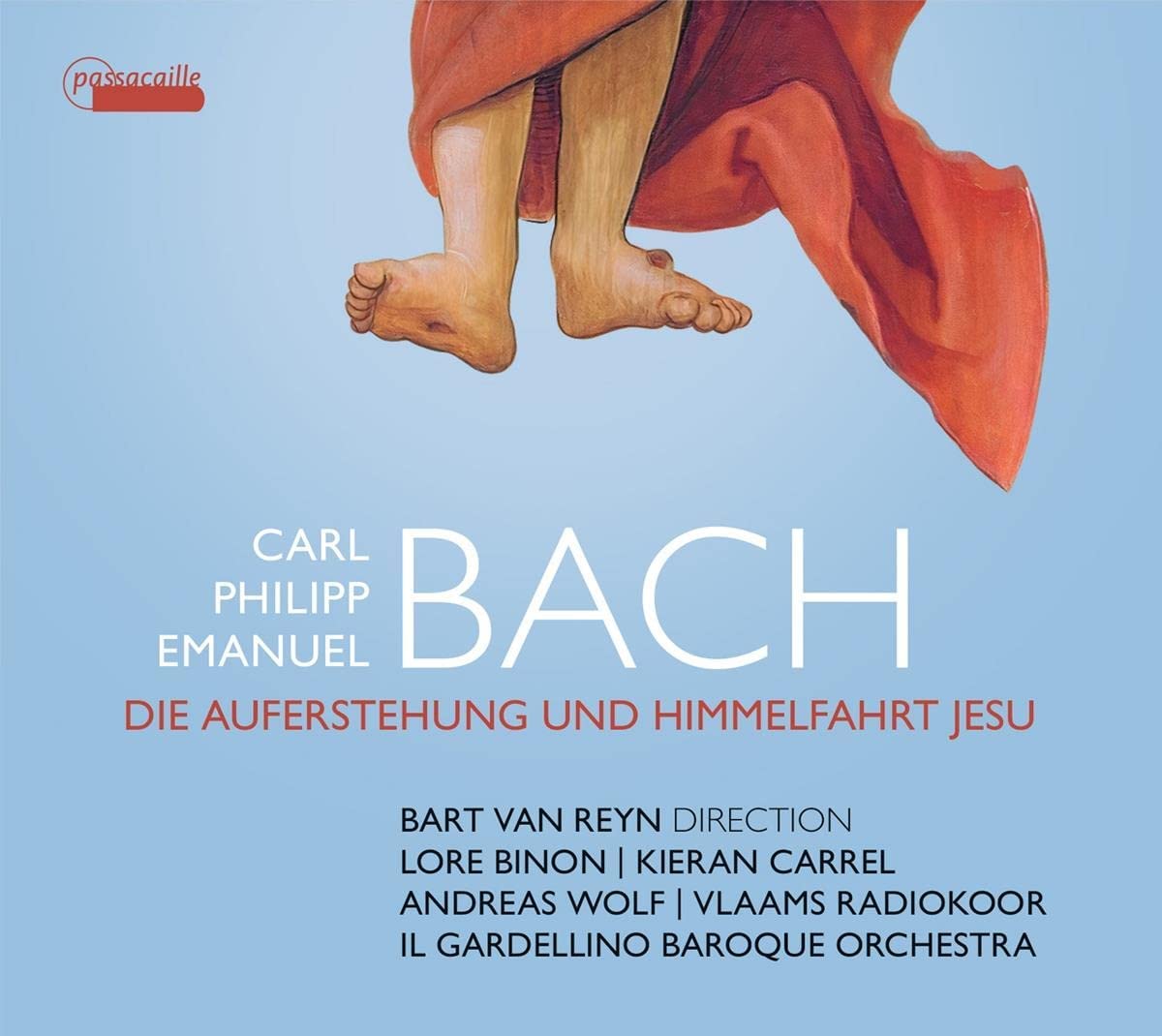Lore Binon soprano, Kieran Carrel tenor, Andreas Wolf bass, Vlaams Radiokoor, Il Gardellino Baroque Orchestra, conducted by Bart van Reyn
69:15
Passacaille 1115
Click HERE to buy this on amazon.co.uk
[These links help keep this site FREE TO VIEW]
In the press release the flautist and co-founder of Il Gardellino Jan de Winne speaks of CPE Bach’s oratorio Die Aufferstehung und Himmelfahrt Jesu as a ‘forgotten masterpiece’. Masterpiece? Yes, indeed this iconic work can deservedly be accorded such an epithet. But forgotten? That’s hardly an apt description for a work that has received distinguished recordings from such notable directors as Philippe Herreweghe (Virgin Classics) and different performances by Sigiswald Kuijken on CD (Hyperion) and DVD (Euroarts).
Composed in Hamburg in 1774, it has in keeping with the spirit of the times in north Germany a poetic rather than liturgical text, in this case, one by Karl Wilhelm Ramler that had been previously set by other composers including Telemann and Graun. It takes an overtly emotional response to the events of the resurrection and ascension of Christ, in addition to a long recitative for bass at the start of the second of the oratorio’s two parts recapitulating the events of and leading up to the Crucifixion. The recitative, which is part narrative and part direct speech is divided into alternating passages of plain recitative and accompagnato, thus contradicting the impression given in the libretto that it consists near wholly of the latter. It is a text well suited to both the ‘Sturm und Drang’ of the 1770s and Bach’s employment of the related Empfindsamkeit, the highly expressive sentimental style particularly fashionable in Berlin and north Germany. Thus the work encapsulates both these elements in the bass’s first aria ‘Mein Geist, voll Furcht und Freude’ (My soul, full of fear and joy), the conflicting yet at the same time parallel emotions expressed in music of quasi-Romantic turbulence and intensity. Exhilarating, mystical and tender by turn, Die Aufferstehung looks both back to the world of Bach’s godfather Telemann in its use of such a device as its ritornello chorus and forward to that of Haydn’s Creation and Beethoven. The latter indeed looms large over the concluding numbers, the bass aria ‘Ihr Tore Gottes’, all brass fanfares and dynamic thrusting against restraint, and the final chorus with its unison passages for male chorus and vigorous fugue.
The performance holds up well against its distinguished predecessors. Bart Van Reyn’s direction and the fine playing of Il Gardellino capture well the varied moods of the work and while his chorus may not quite match the very best groups it is well balanced and responds with both fervour and, where needed, a sensitivity clearly apparent as early as the lovely opening chorus, ‘Gott, Du wirst seine Seele’. Tempos are on the whole well judged, though the fugue that concludes Part 1 sounds rushed and consequently untidy. Unusually most of the important solo work is given to the male soloists, the soprano not appearing at all in Part 2. The singing of bass Andreas Wolf is outstanding – rounded and richly toned, while articulating both text and music with clarity. Kieran Carrel is a light lyric tenor who sings extremely capably without quite effacing memories of Christoph Prégardien, Herreweghe’s soloist. Lore Binnon sings the little allotted to the soprano with an appealing purity and freshness, although her ornaments are not always confidently turned. As is so often the case, there was sadly no evidence of a vocal trill throughout the entire performance.
This finely executed and dramatically convincing Die Auferstehung can certainly stand alongside the earlier versions of one of Bach’s most influential and significant choral works.
Brian Robins

2 replies on “C. P. E. Bach: Die Auferstehung unf Himmelfahrt Jesu”
As you rightly say another recording… of this work! BUT overlooked (in all senses!!) is Telemann’s setting of this very fine libretto, written some 14 years previously, in 1760! And “specifically” for GPT as a kind of swansong showpiece! This, too, is a neglected masterpiece, also embracing the new musical strain/modes of the Empfindsamkeit! Has some superb writing! The final sequence is truly inspired: “Open ye Portals of Heaven” set upon an Overture with 2 sopranos, ending in a blaze of glory!
PS I was certain there were more recordings of this fine piece! There is the Hermann Max version (2004) and the one people raved about… did it get onto CD (RaumKlang??) The Diego Fasolis Version (reviewed HERE).